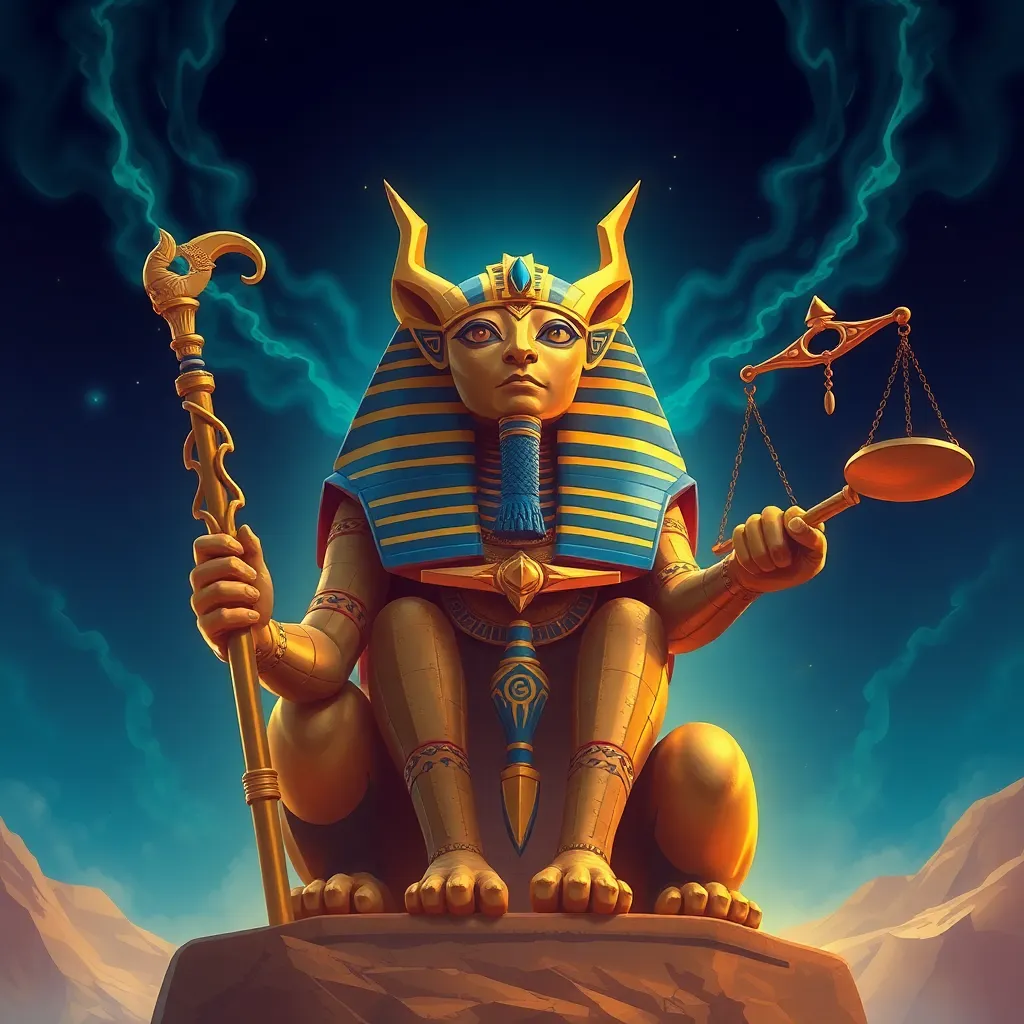Ammit: The Guardian of Divine Justice
I. Introduction to Ammit
In the rich tapestry of ancient Egyptian mythology, Ammit holds a unique and fearsome position as the guardian of divine justice. Often depicted as a terrifying creature, she embodies the consequences of moral failure and the importance of justice in the afterlife. Ancient Egyptians believed that their actions during life determined their fate after death, and Ammit played a crucial role in this belief system.
The concept of divine justice was central to Egyptian beliefs, manifesting in the idea that one’s soul would be judged based on their deeds. The presence of Ammit in this narrative underscored the seriousness of ethical conduct and the ultimate accountability each person faced.
II. The Mythological Origins of Ammit
Ammit’s origins can be traced back to the complex mythological framework of ancient Egypt, where deities and spirits governed the realms of life, death, and the afterlife. She emerged during the New Kingdom period as a symbol of divine retribution, reinforcing the moral codes prevalent in society.
In the afterlife narrative, Ammit was not merely a fearsome creature but a necessary being that ensured the balance of justice. Her role was essential in the weighing of the heart ceremony, where the souls of the deceased were judged, determining their fate in the afterlife.
III. Ammit’s Physical Description
Ammit is often described as a hybrid creature, combining features of three powerful animals: the lioness, the hippopotamus, and the crocodile. This unique composition carries deep symbolism:
- Lioness: Representing strength and ferocity, the lioness is a symbol of protection and the fierce nature of justice.
- Hippopotamus: This animal is associated with chaos and destruction, reflecting the potential consequences of failing the judgment.
- Crocodile: A symbol of danger and cunning, the crocodile adds an element of unpredictability to Ammit’s character.
The amalgamation of these creatures signifies that Ammit is a force to be reckoned with, embodying the dangers of moral failure in the eyes of the divine.
IV. The Weighing of the Heart Ceremony
The weighing of the heart ceremony is one of the most iconic rituals in ancient Egyptian beliefs regarding the afterlife. In this ceremony, the heart of the deceased was weighed against the feather of Ma’at, the goddess of truth and justice. This process was crucial in determining whether the soul was worthy of entering the afterlife.
Ammit’s role in this judgment process was to consume the hearts of those deemed unworthy. If a soul’s heart was heavier than the feather, it indicated a life filled with wrongdoing, and Ammit would devour it, preventing the deceased from achieving eternal life. This act served as a grim reminder of the consequences of one’s actions.
V. The Concept of Divine Justice in Ancient Egypt
The ethical implications of Ammit’s judgment reflect the values of ancient Egyptian society. The belief in divine justice established a moral framework that guided the behavior of individuals. The fear of facing Ammit served as a powerful motivator for people to live justly and uphold the principles of Ma’at.
In this context, Ammit was not merely a monster but a necessary aspect of the moral order. She represented the idea that one’s actions had consequences, reinforcing the importance of integrity and virtue in life.
VI. Ammit in Art and Literature
Ammit’s presence in ancient Egyptian art is both striking and significant. She is often depicted in tomb paintings and funerary texts, where her fearsome visage serves as a reminder of the judgment awaiting the deceased. Artists portrayed her with a combination of ferocity and majesty, emphasizing her role as the guardian of divine justice.
In addition to visual art, Ammit is referenced in several Egyptian texts, including the Book of the Dead. These texts offered guidance on navigating the afterlife and the importance of living a righteous life to avoid Ammit’s wrath. Interpretations of these references highlight the cultural significance of her character in reinforcing morality.
VII. The Legacy of Ammit in Modern Culture
Ammit’s influence extends far beyond ancient Egypt, permeating modern culture in various forms. She appears in contemporary media, including films, television shows, and literature, often reinterpreted to reflect current societal issues regarding justice and morality.
In modern contexts, Ammit is sometimes depicted as a symbol of retribution, embodying the struggle between good and evil. Her character can be seen as a metaphor for the consequences of one’s choices, resonating with audiences who grapple with similar moral dilemmas today.
VIII. Conclusion
In conclusion, Ammit stands as a powerful guardian of divine justice within ancient Egyptian mythology. Her role in the afterlife narrative underscores the importance of moral conduct and the serious consequences of one’s actions. The legacy of Ammit continues to resonate, influencing modern interpretations of justice and morality.
As we explore the depths of ancient beliefs, Ammit serves as a reminder of the enduring nature of ethical principles and the complexities of judgment that echo through time.




